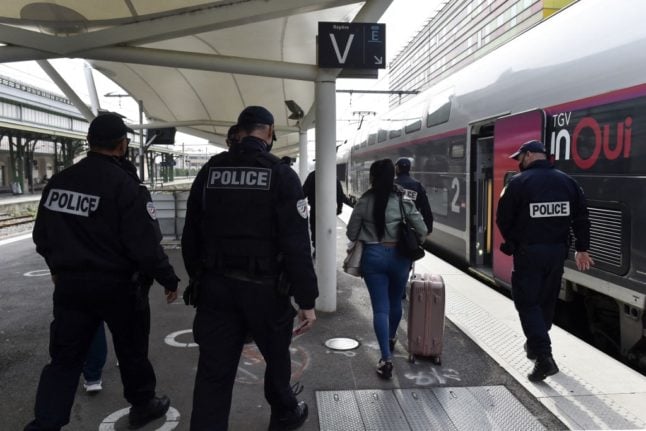Those living in the 19 areas of France under partial lockdown are forbidden from travelling 10km beyond their home except for essential work or family reasons.
And the government is determined to enforce the measure.
Interior Minister Gérald Darmanin said Friday that he would mobilise 90,000 police officers and gendarmes to issue checks on highways, airports and train stations.
“We want to ensure that there is no change of département and that the French accept to remain in their area,” Darmanin said during a press conference.
RED ALSO: Easter holidays in France – what are the rules and the government’s advice?
Earlier that day the Prime Minister’s office said the increased police presence would begin from Friday evening at 7pm when the daily curfew comes into force.
‘It’s a race against the clock,” the PM’s office said.
The prime minister’s office known as Matignon said the extra checks were needed because of the third wave and the dominance of the more contagious and more severe variant first detected in the UK.
Travel between regions under partial lockdown to other parts of France is not allowed with anyone travelling further than 10 km from their home needing an exemption certificate (attestation) and a valid reason for travel such as essential work reasons – find the full list of reasons HERE.
Breaking the lockdown or curfew rules means risking a €135 fine, which can rise to €3,750 and six months in prison for repeat offenders.



 Please whitelist us to continue reading.
Please whitelist us to continue reading.
Your heading photograph shows exactly what action the French police and gendarmerie take in most situations. When they do make an appearance which in my experience is seldom, they cluster in groups of at least 4 and up to 8 at a time.
If they patrolled individually, or even in pairs if they need “a mate,” think how many more areas they would be spread over. Perhaps then the populous would take more notice of the prevailing regulations!!
Don’t give them ideas! Then again, most can’t read (English) 🙂
Think about this. 4 cops to check attestations for an entire train full of passengers. And ensure trains leave on time?
And to check every car at peage on the A7 / A8?
Airlines require proof of COVID negative; why not trains?
This story is one big LIE.
Probably fed to news outlets to scare people?
Several people I know have traveled by TGV in the past 48 hours and none of them either saw any authorities or were checked.
I drove from Paris to Nice over 2 days and there were NO police at the Peages. Anywhere. Either leaving Ile de France or PACA.
After I spent a lot of time preparing my dossier for my attestation.
AND … I was stopped by Police Gendarmes near Lyon for a traffic infringement … they DID ask me where i was driving from and to but nothing else. I’ll not go into a long story but I had no idea a) I was being pulled over nor b) for what. Did I learn. All I told them was that I was part of the Brexit crime wave and they let me off with a warning.